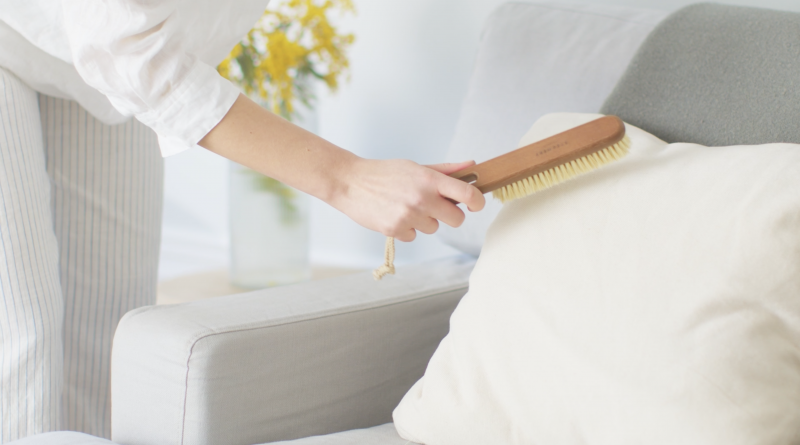
Textile Surfaces as Functional and Hygienic Elements
Home textiles influence air quality and material longevity
Curtains, upholstery covers, bed linens, and cushions are more than decorative features—they are active surfaces in the household environment. These fabrics regularly absorb dust, skin particles, airborne pollutants, and odors. Over time, such accumulation can affect indoor air balance and contribute to material wear. GLENCO DRY CLEANING approaches home and interior textile cleaning by acknowledging these factors, aiming to restore hygiene and maintain fiber condition without altering appearance, color, or texture. 🛋️🧺🌫️
Fabric Identification and Soil Analysis
Determining cleaning conditions based on textile type
Before treatment begins, each home textile item undergoes a full assessment. This includes identification of fabric composition, seam strength, lining types, and any existing signs of stress or discoloration. Particular attention is given to heavily exposed items such as window coverings and headrest areas. The level and type of accumulation—dust, oils, odor residues, or allergens—are also noted. These factors help guide the cleaning plan, including the choice of temperature, solvent, and handling method. 🔍📋🧤
Gentle Solutions Adapted to Fabric Needs
Not all textiles benefit from the same process
Home fabrics vary significantly: some are robust and can withstand machine cycles, while others, such as silk-lined drapery or embroidered cushions, require specialized hand treatment. Cleaning protocols are adapted to each material’s tolerance. Curtains, for instance, are cleaned with minimal water exposure to avoid shrinkage, while thick upholstery covers may undergo deeper rinsing cycles to remove embedded particulates. Each piece is treated to ensure that its visual integrity and structure are preserved throughout the process. 🧼🧽🧵
Targeted Treatment of Invisible Residues
Improving indoor air through deep-fiber cleaning
Home textiles accumulate allergens including pollen, dust mites, and mold spores, particularly in warm or humid environments. These residues can remain trapped in the fibers even after surface vacuuming. GLENCO DRY CLEANING uses temperature-moderated cleaning and fabric-safe neutralizers to dissolve and lift these substances from the interior of the material. Odor removal follows similar protocols, using balanced agents that break down organic compounds without masking them. The result is a cleaner surface and a more neutral indoor scent profile. 🌬️🧴🦠
Form Preservation Through Drying and Shaping
Preventing distortion and uneven shrinkage
Drying is an essential phase in home textile cleaning. It must be conducted without introducing structural tension, folding damage, or crease setting. To this end, items are air-dried on custom frames or suspended in a manner that supports their natural shape. Heavy fabrics are rotated to ensure even evaporation, while lighter items are pressed gently to restore smoothness. These procedures allow fibers to realign, improving feel and appearance without applying unnecessary heat or pressure. 🌡️🧺🛏️
Convenient Storage and Transport Options
Preserving cleaned textiles until use or reinstallation
After cleaning and drying, GLENCO DRY CLEANING provides careful packaging of all interior textiles. Items are folded using tension-free methods and placed in breathable coverings to prevent moisture buildup. Bedding and covers are stored with fiber supports to reduce long-term crease formation. Curtains are rolled or pleated based on their original hanging design. This service enables safe transport and reduces the need for further handling prior to reinstallation. 🧳📦🧣
Frequency and Handling Guidelines for Households
Prolonging cleanliness through routine care
Clean home textiles maintain their appearance longer when supplemented by correct household handling. Clients receive guidance on how often each item should be professionally cleaned depending on room usage, season, and occupant sensitivity. Recommendations also cover protection from direct sunlight, humidity control, and separation of outer fabrics from direct contact with skin or food. These measures contribute to healthier surroundings and slower fabric degradation between cleanings. 📘🧾🛋️
Curtains, Covers, and Multi-Layered Items
Handling textiles that serve both functional and aesthetic roles
Textiles that perform structural functions—such as blackout curtains, mattress protectors, or layered upholstery—are cleaned with added consideration. The internal layers must remain undisturbed, and fasteners or reinforcements require protection. Our process includes masking sensitive attachments and controlling spin or agitation cycles to avoid fabric shifting. These items are rechecked after cleaning to verify that weight distribution, shape, and padding levels remain consistent with their original design. 🧷🪟🧦
Preserving Interior Harmony Through Textile Health
Focusing on sustainable usage and fabric conservation
Interior textile cleaning at GLENCO DRY CLEANING is designed around the idea that well-maintained fabrics support not just visual aesthetics, but also household cleanliness and comfort. Rather than prioritizing speed or intensity, we focus on balanced care that aligns with material longevity. This perspective ensures that each item—whether utilitarian or decorative—continues to perform its function in the living space without premature deterioration or loss of form. 🏡🧤♻️